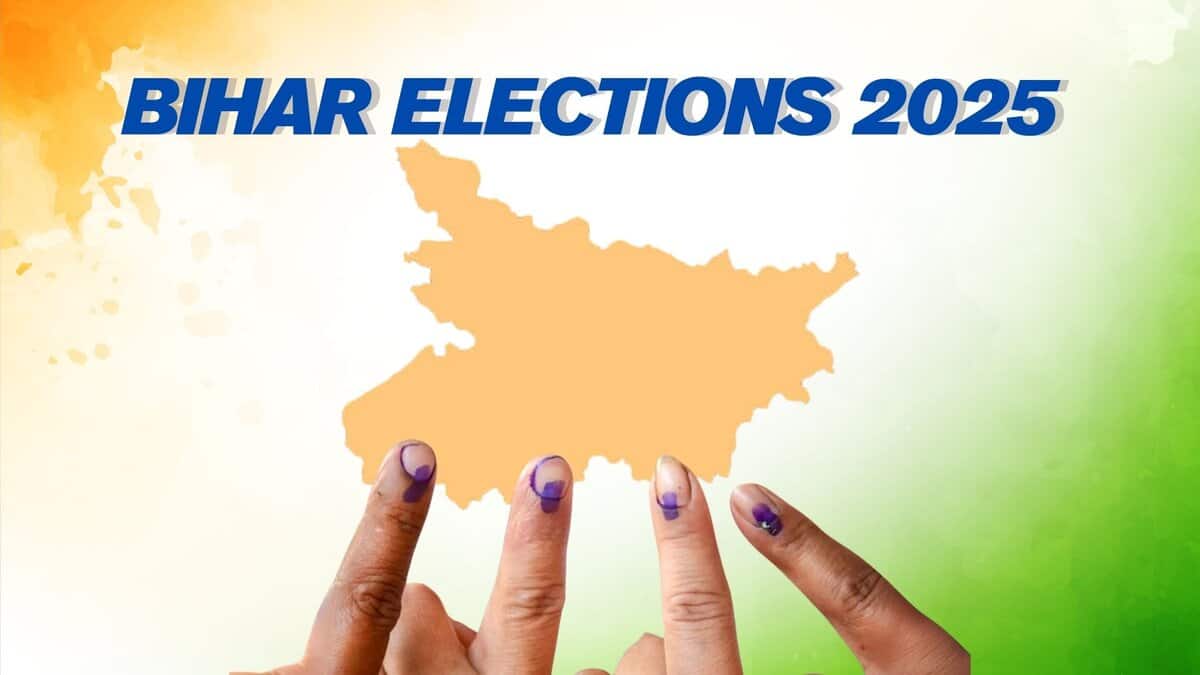
The upcoming 2025 Bihar Assembly election is expected to be fiercely competitive, with significant implications for all parties involved. While opinion polls favour the ruling NDA (National Democratic Alliance), they obscure strong anti-incumbency sentiments against Chief Minister Nitish Kumar.
BJP leaders are already claiming victory. Prime Minister Narendra Modi declared on X that the BJP-NDA will register a comprehensive win in Bihar.
Political analysts predict that the polls involve the parties and their leaders. They also depend on leadership, caste dynamics, and voter perceptions. The INDIA bloc, led by the Rashtriya Janata Dal (RJD) and allied with Congress and smaller parties, seeks to end two decades of NDA rule. With strong leadership and organisation, the mood of the electorate suggests a volatile race ahead.
Dissatisfaction among local MLAs, combined with a lack of development and job creation in rural areas, weakens the ruling alliance’s support. Although the NDA is backed by upper castes and older voters, its inability to engage youth and OBC (Other Backwards Classes) groups presents challenges for the party.
NDA poll campaign
The results of the elections are greatly influenced by the campaign leaders of the National Democratic Alliance (NDA). Kumar maintains strong support from voters, especially women, who appreciate his initiatives such as free electricity, clean water, and a plan to create one crore (10 million) jobs.
Additionally, he has allocated Rs 10,000 each for a women’s welfare program that aids 25 lakh women.
The C-Voter survey showed a fluctuating popularity of Chief Minister Nitish Kumar; respondents selected him as their preferred Chief Minister. A surprising contender was Prashant Kishor, leader of the Jan Suraaj party, who emerged as a favoured candidate with 16 per cent of the vote.
The NDA has a solid network across Bihar, comprising workers from both the BJP and JD(U) (Janata Dal United), as well as backing from RSS (Rashtriya Swayamsevak Sangh) groups. Recent development projects supported by the Prime Minister have helped strengthen the NDA’s campaign.
For BJP, finance is no problem
The BJP backed the JD(U) with top BJP leaders campaigning for the NDA, and financing is not an issue. However, the NDA struggles at the local level, where it lacks the same level of credibility and grassroots support as its opponents.
Tejashwi leads a house divided
The RJD’s chief ministerial candidate, Tejashwi Yadav faces a significant challenge despite having a loyal Muslim-Yadav voter base that accounts for nearly 30% of the electorate. The latest C-Voter survey indicates that he remains the top choice for the Chief Minister position in Bihar. Tejashwi, son of Lalu Yadav, is popular among the youth and has promised several populist measures to voters. They include increased social welfare benefits, such as pensions and healthcare, as well as job creation initiatives through government employment drives and support for small businesses.
Tejashwi leads the RJD, but his father, Lalu Prasad Yadav, and other family members still wield significant influence. Family disputes often force Tejashwi to focus on resolving internal conflicts rather than party strategy. Some face legal issues, including an ED investigation into the land-for-jobs scam.
Rahul, Priyanka to campaign
Congress leader Rahul Gandhi had not previously campaigned, but now plans to hold rallies and roadshows to mobilise support from the Congress loyalists.
His sister, Priyanka Gandhi Vadra, is also actively campaigning in the state. However, the party struggles due to a lack of strong local leaders. Congress’s ongoing underperformance is seen as a weak link in the coalition. Since the 1995 Bihar assembly elections, Congress has not managed to win more than 30 seats in any election.
This time, the Congress has fielded 61 candidates, with 56 of those seats seeing direct competition against the BJP and JD(U) — seats largely under NDA control.
The BJP mainly operates in urban and semi-urban areas, which comprise around 30% of the population. Its upper-caste dominance, a result of historical and social factors, restricts its appeal to backward and marginalised communities, which could be a challenge in a state like Bihar with a significant OBC and Dalit population. The BJP leaders, including Prime Minister Narendra have been campaigning in Bihar.
Old horse has experience
The NDA highlights Nitish Kumar’s welfare experience, while the INDIA bloc emphasises young leadership and boosting voter participation. The youth vote and overall turnout will be key in shaping Bihar’s future.
The latest VoteVibe survey shows a tight race, with the MGB at 34.7% and the NDA at 34.4%. Jan Suraaj has 12.3% support, while 8.4% anticipate a hung assembly.
This election is crucial because it can significantly impact the futures of many leaders at both local and national levels. If Modi and Amit Shah win, they will have a better chance in next year’s elections.
A loss at this point in time for Nitish Kumar may be the end of his political career.
Rahul and Priyanka Gandhi also face uncertainty about their futures. The results for Chirag Paswan, Prashant Kishor, and other smaller parties are crucial.
Overall, the election results will help some leaders and create challenges for others. It will be a nail-biting experience.



